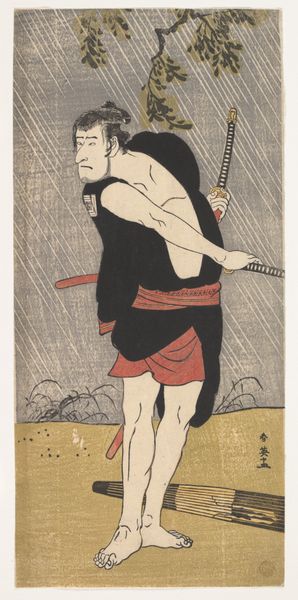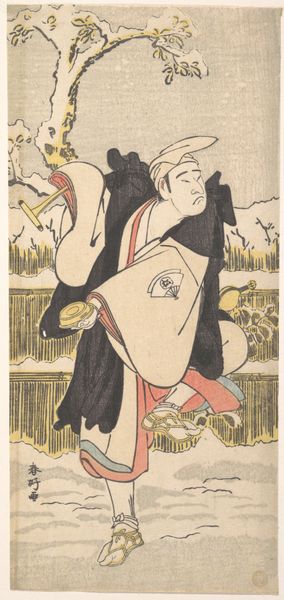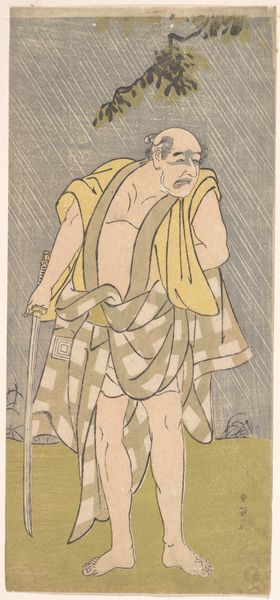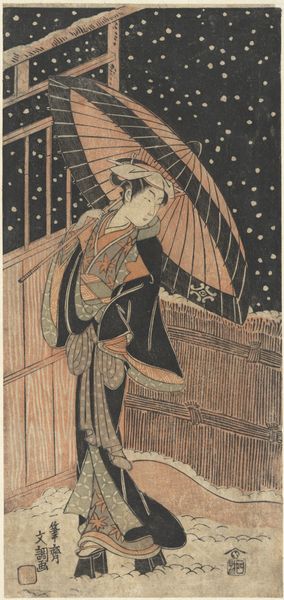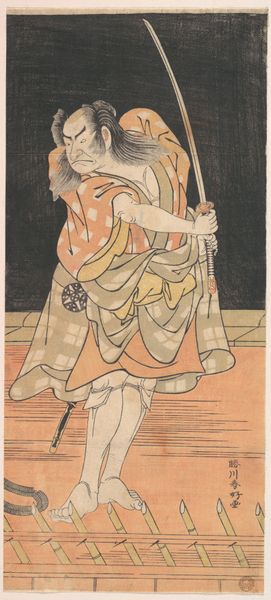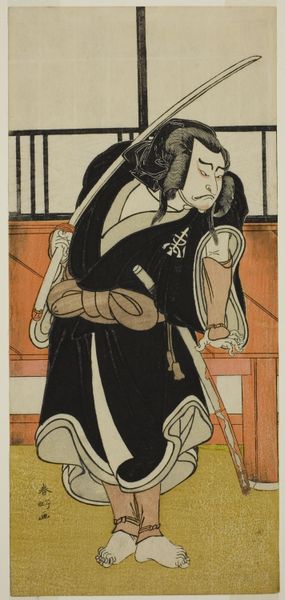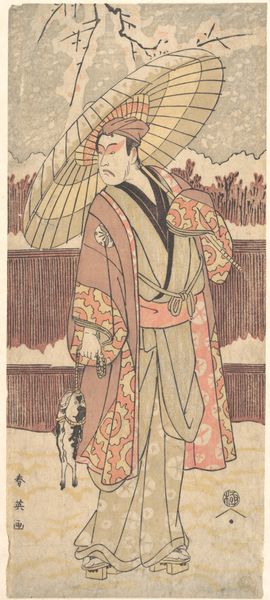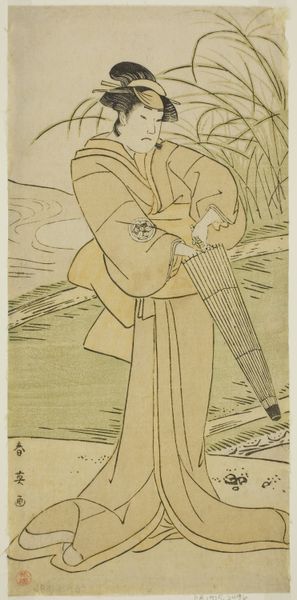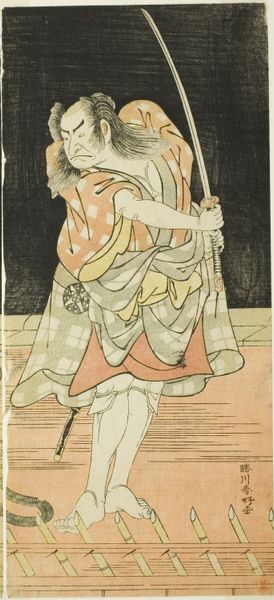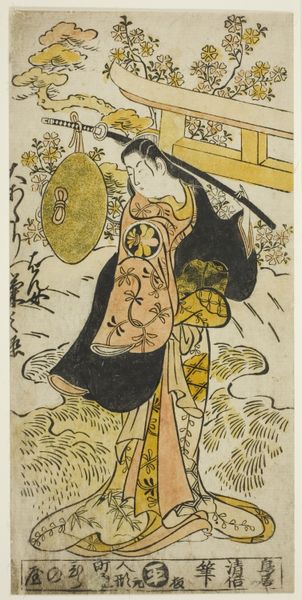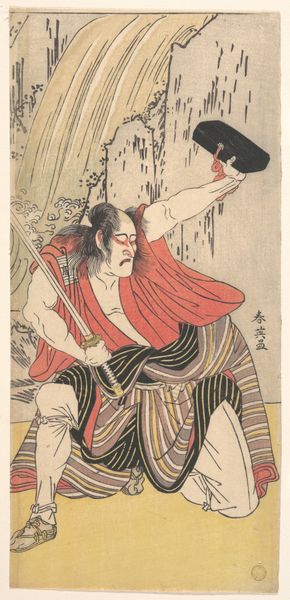
Onoe Matsusuke as Man Armed with a Sword, Standing in Snow before a Fence 1786
0:00
0:00
print, woodblock-print
#
portrait
#
snow
# print
#
asian-art
#
landscape
#
ukiyo-e
#
japan
#
figuration
#
woodblock-print
#
sword
Dimensions: H. 12 5/8 in. (32.1 cm); W. 5 3/4 in. (14.6 cm)
Copyright: Public Domain
Editor: So, here we have Katsukawa Shunko's "Onoe Matsusuke as Man Armed with a Sword, Standing in Snow before a Fence," a woodblock print from 1786. The figure seems so isolated against that stark snowy backdrop. What do you see in this piece? Curator: I see a convergence of symbolism and cultural memory. The snow, rendered in those almost whimsical dots, isn't just weather. Snow, in Japanese art and culture, is often associated with purity, but also with hardship and the transient nature of life. Notice how it contrasts with the vibrant red of his robe—a colour associated with protection. Editor: Protection from the cold? Or something more symbolic? Curator: Precisely! Red is a powerful colour with varied associations—warding off evil, vitality, and even rebellion depending on context. Here, it might be shielding Onoe Matsusuke’s persona against the vulnerability suggested by his bare feet in the snow, juxtaposed with the potential aggression signified by his sword. It brings forth an element of performative strength. Do you perceive this performativity? Editor: Absolutely, it’s like he's caught between worlds - strength and vulnerability, warmth and cold. The fence seems to emphasize confinement. Curator: Indeed. Fences often act as visual barriers, signifying boundaries. However, in ukiyo-e prints like this, fences create depth, creating a liminal space that also provides a layer of protection in theatrical Kabuki tradition. The actor *becomes* the embodiment of this ambiguous space, highlighting tensions present within the figure he is portraying, creating an interesting parallel between performance and lived experience. Editor: I never thought of it that way. It's more complex than just a portrait; it’s a narrative condensed into a single image, layered with meaning! Curator: Exactly! These symbols build an intricate story, rich with cultural context, prompting us to think about our associations and their continuous relevance.
Comments
No comments
Be the first to comment and join the conversation on the ultimate creative platform.
